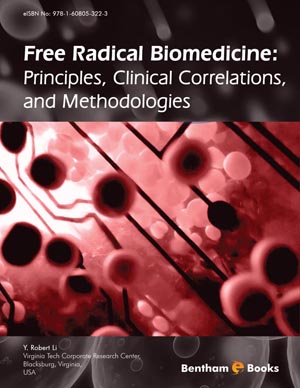Abstract
Due to the detrimental nature of reactive oxygen and nitrogen species (ROS/RNS), a number of antioxidants have been evolved to control these reactive species in mammals, including humans. The endogenous antioxidative defenses include antioxidant enzymes/proteins and non-protein antioxidant compounds synthesized by cells. Mammalian cells and tissues also contain antioxidant compounds derived from the diet. In addition, a number of synthesized antioxidant compounds have become available. This chapter provides a survey of the various types of antioxidants encountered in free radical biomedicine. The chemical or biochemical properties, biological activities, and molecular regulation of antioxidants are discussed in the context of their implications for disease intervention.
Keywords:
Antioxidant vitamins, Antioxidants, carotenoids, Catalase, Dietary antioxidants, Glutaredoxin, Glutathione system, Heme oxygenase, Methionine sulfoxide reductase, NAD(P)H:quinone oxidoreductase, Non-protein antioxidants, Nrf2, Paraoxonase, Polyphenols, Superoxide dismutase, Thioredoxin system.


 Download PDF Flyer
Download PDF Flyer